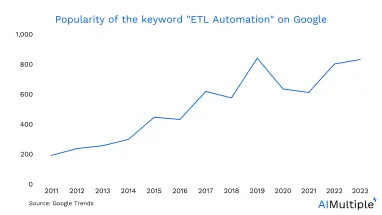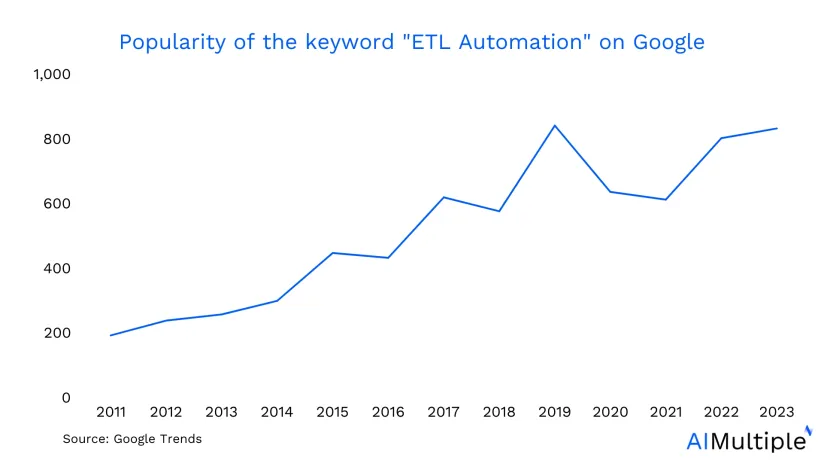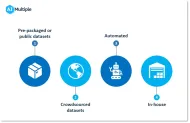The drive for data-driven business decisions, the exponential increase in business data, diversifying data sources and inflexible legacy data warehousing approaches left enterprises relying on a myriad of data marts, enterprise data warehouses and multiple data management tools.
This led to complex data warehouse processes. 42% of data management processes that can be automated are being done manually, slowing down decisions and increasing costs.1 Due to limited data warehouse automation (DWA), out of 100 technology leaders:
- 83 don’t always have access to the data needed to inform timely decision making. An average of 4 working hours is being lost per employee per week in the IT department or data team due to the need to resolve issues related to preparing data for analysis
- 84 agree analytics projects are delayed within their organization due to data not being available in the required format
- 82 have had to rework data analytics projects after they have been completed due to poor data quality
Data warehouse automation tools enable businesses to cut down on the time and cost of repetitive data warehousing tasks. Organizations using DWA tools can see productivity gains of 400% throughout the data warehouse lifecycle.2 Yet, DWA adoption is growing slowly due to several factors.
Explore the benefits of DWA to help enterprises make effective cost benefit trade-offs regarding their DWA investment.
What is data warehouse automation?
Data warehouse (DW) automation is the practice of using software to automate repetitive, rule-based tasks in data warehousing and DW development cycle, such as:
- data transfers and updates for data integration
- design
- modeling
- development
- testing
- deployment
- operations
- impact analysis (i.e. analysis of business processes and dependencies to understand the impact of implementing changes and modifications)
- documentation and reporting
Why is DWA adoption growing slowly?
Growing maturity
Data warehouse automation tools are newer compared to traditional data warehousing systems. While the work on data warehousing began in 70s, data warehouse automation software is generally built by companies built in early 2000s.
Costs
While data warehouse automation leads to long-term savings, there will be upfront costs associated with implementing data warehouse automation tools, training and reengineering existing processes. Given the urgent workload of data warehouse teams, such transformational projects can get postponed.
Perceived risk
Data warehouse automation may be viewed as potentially introducing errors or introducing technical debt via code generation.
Need for training and adaption
Leveraging data warehouse automation requires an understanding of how DWA works to best leverage its capabilities. Technical personnel will need to be trained before they get used to DWA and increase their efficiency.
Implementation challenges
Data warehouse automation aims to automate ETL processes and other aspects of data warehouse development including data modeling and testing. However, given the complexity of existing enterprise data warehouse systems, implementation can be complex.
5 reasons to leverage data warehouse automation software
1- More data-driven decisions:
Organizations implement DWA to realize their original goals with data warehouses: making data-driven decisions. DWA enables this thanks to easily-accessible, trustworthy and high-quality data. The reasons below are all reasons enabling this.
2- Increased productivity
Data warehouse automation enables developers to work at a higher level of abstraction, increasing their productivity. Productivity drivers include automation of these tasks:
- Automated Code Generation is critical for data automation. Data warehouse automation tools generate code for various components of the data warehouse, such as data mapping and ETL (Extract, Transform, Load) processes.
- Connectors: An important task of data warehouses is to consolidate data. Disparate data from different enterprise data systems such as relational databases, systems of record that include data assets, legacy systems with historical data need to be integrated. Data warehouse automation software provides pre-configured connectors to facilitate this and have the data warehouse enable an integrated data ecosystem.
- Automated documentation ensures that documentation remains up to date, enabling faster onboarding and improved alignment.
3- Speed and flexibility
With increased automation, new data platforms, data warehouses can be deployed faster and data warehouse projects can be implemented faster.
4- Standardization
Hand coding leads to variation in coding standards within the organization while data warehouse automation software elevate developer work to higher levels of abstraction, increasing standardization of lower level data warehousing code.
5- Improved Data Quality
Data warehouse automation helps enforce data quality standards and consistency. By automating data validation, transformation, and cleansing processes, organizations can ensure that data is accurate, consistent, and reliable. This automation reduces human intervention in data transfer, migration, or manipulation, therefore reducing data duplicates and errors.
What is a data warehouse automation tool?
Data warehouse automation tools typically have
- a low-code and drag-and-drop development interface
- the capability to automate the data collection from multiple sources and platforms by scheduling or triggering batch processes such as data transfers and ETL.
- built-in connectors to integrate to databases and business platforms such as CRM, ERP, etc. in order to facilitate data management across these platforms.
What are the top warehouse automation tools?
There are 3 different types of data warehouse automation software vendors:
- Workload automation tools that can automate various IT operations including data warehouse operations
- Data warehouse automation focused startups/scaleup companies like WhereScape
- Tech giants’ solutions focused on their platform like Oracle Autonomous Data Warehouse
Review top vendors by checking out our objective data warehouse automation software benchmarking and constantly updated vendor list.
What is a data warehouse?
If you want a refresher, a data warehouse is the electronic storage space of structured and unstructured business data from different sources (e.g. ERP, CRM, IoT devices), which can be edited and analyzed for understanding business processes and making data-driven decisions. Data warehouses typically have four main components:
- Central database
- ETL (extract, transform, load) tools
- Metadata
- Access tools, such as data mining/data science or reporting tools.
For more on data warehouse automation
If you believe your business will benefit from a data warehouse automation solution, feel free to check our data-driven lists of vendors for:
Check out complementary tools to automate data warehouse tasks, such as:
- Top 10 Batch Scheduling Software: Features, Pros & Cons
- Compare Top 15+ IT Automation Software: Vendor Benchmarking
- Compare 12 Data Orchestration Tools
And we can help you choose the right vendor for your business:
External sources
- 1. “The State of Data Management”. SnapLogic. 2020. Retrieved May 9, 2023.
- 2. Automating Data Warehouse Development.




Comments
Your email address will not be published. All fields are required.